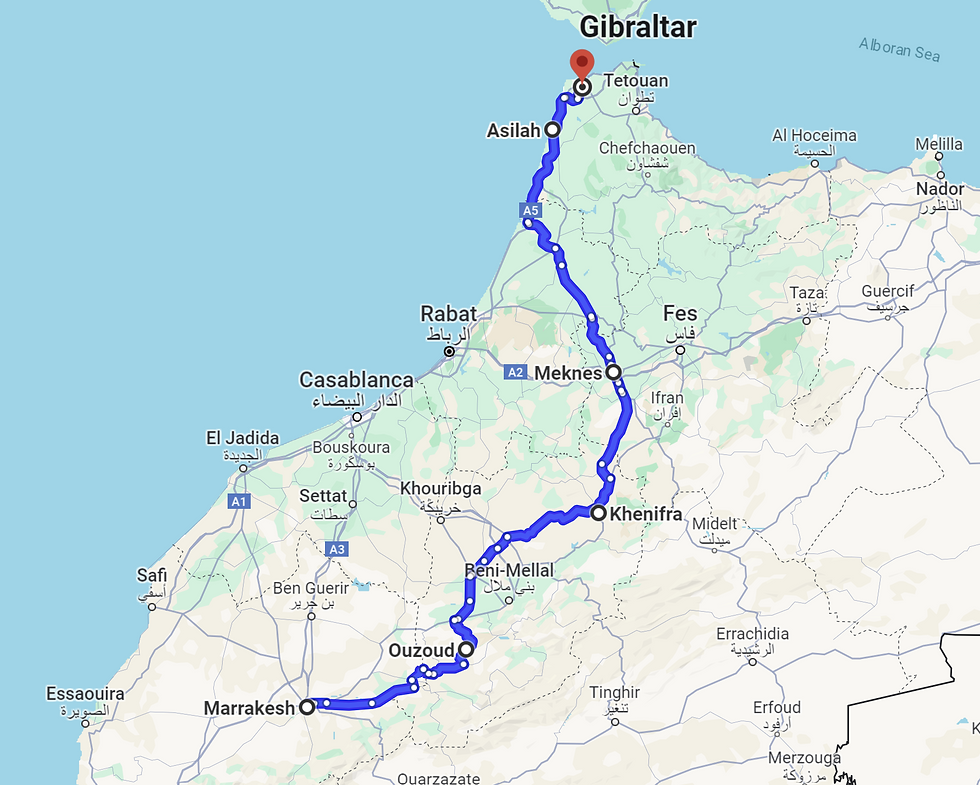
The drive out of Marrakesh towards Ouzoud starts very badly; the scenery is flat, featureless, and industrial, with a huge plume of smoke filling the sky and rubbish strewn at the sides of the road - it carries on like that for miles.
Things improve markedly as we start to climb into the Middle Atlas mountains once more, the foothills are home to light agriculture and dotted with villages, the rock is a warm golden colour and everything is comparatively very orderly.
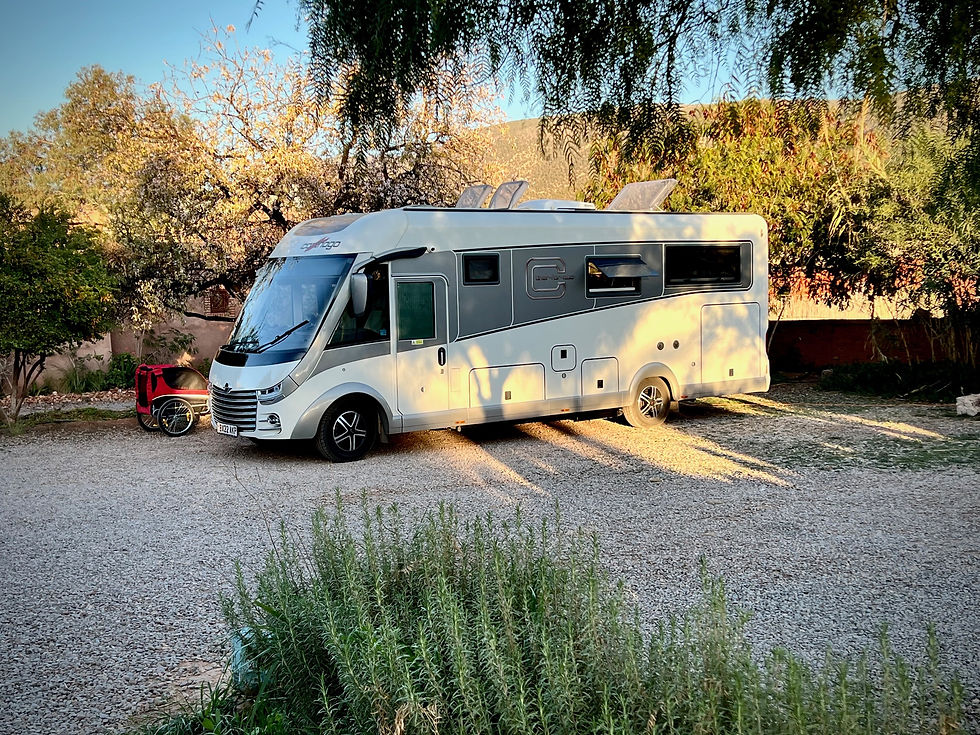
The campsite - Camping Auberge Zebra - is a haven of peace and beauty; it’s certainly right up there with the best we’ve experienced this whole trip, including Spain and Portugal. It’s quite high up in the mountains and boasts spectacular vistas across the valley to more mountains beyond.

We’re here to see the Cascades d’Ouzoud, the tallest in North Africa standing at 110 metres high. We cycle down from the campsite to the top of the falls with the dogs in tow in their trolley and then we walk down to the bottom via the quiet route which is almost deserted save for one of two small cafes and souvenir stalls.
You can cross over the river at the bottom via a homemade bridge constructed of small planks of wood and then via some sandbags - a bit hair-raising for chickens like Janette!
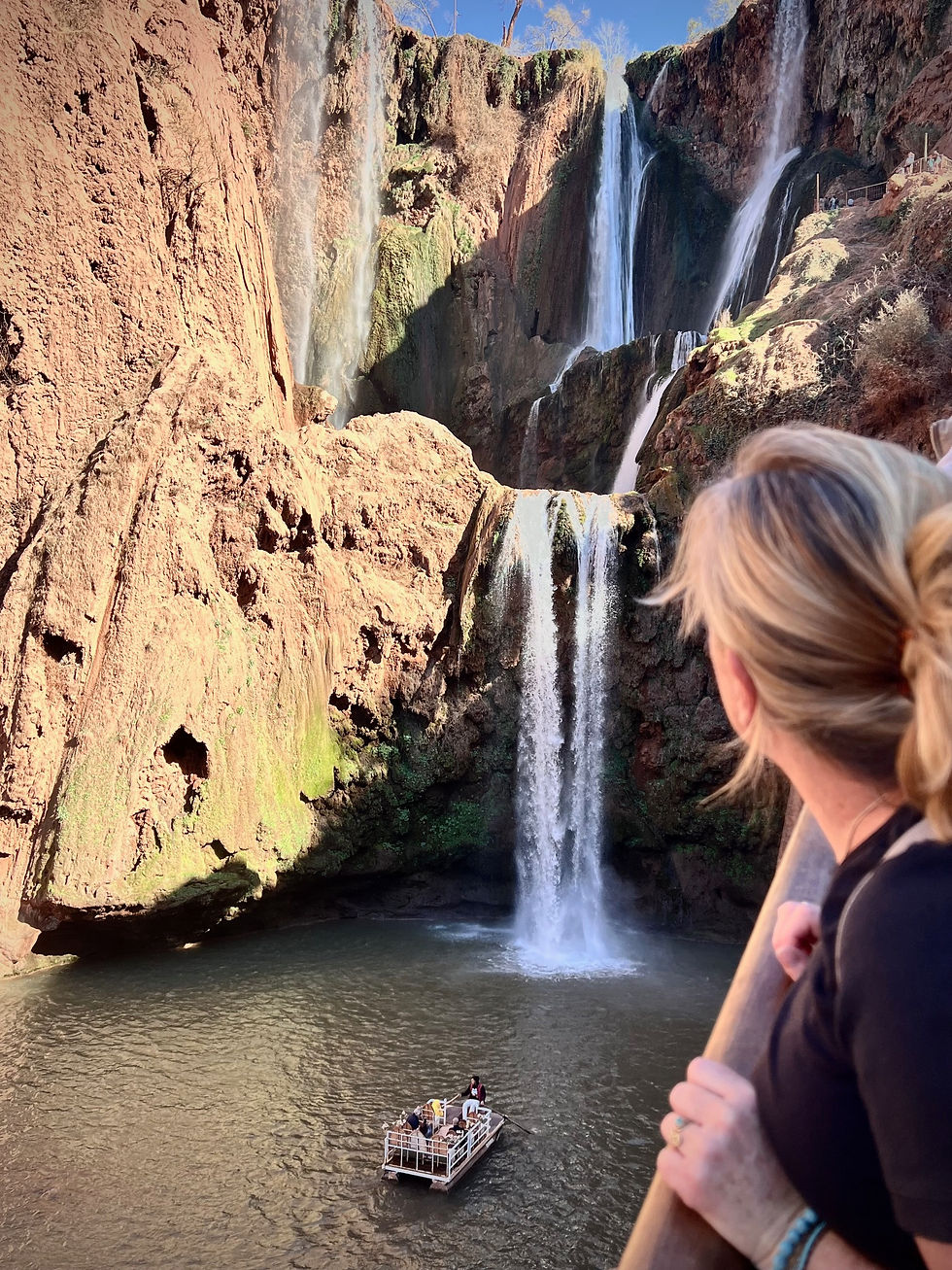
You can also take a boat trip up to the cascade in a flat-bottomed rowing boat, the seats for passengers are incongruous banqueting chairs!
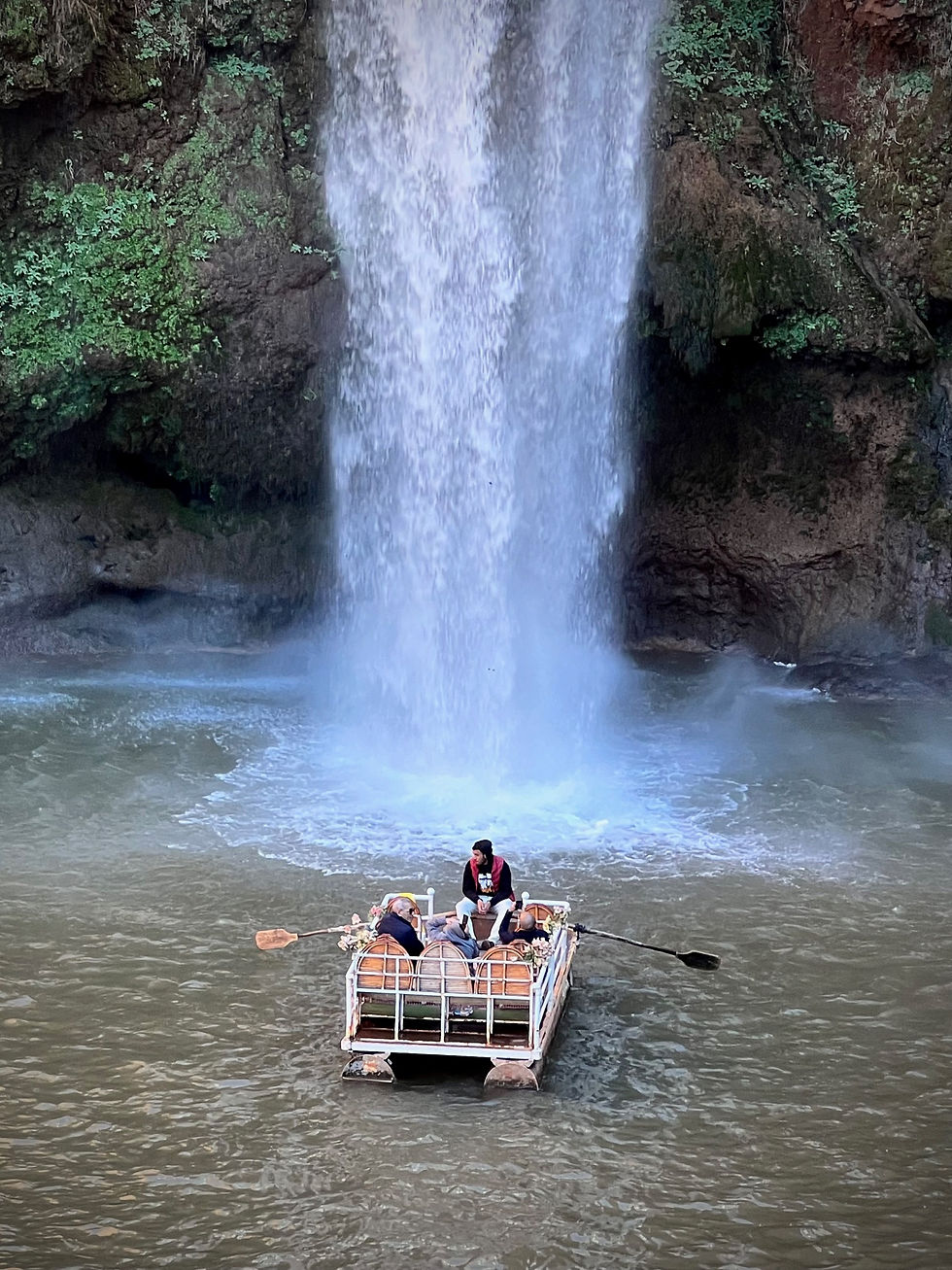
The way back up to the top of the falls is lined with tourist shops and cafes. A number of the stallholders are very taken with the Amazigh necklace Nick bought in Tiznit and they’d like to sell him more but he's keen to avoid looking like a rapper so he resists!

Janette finds an antique Amazigh Kabyle box, a trinket box that converts into a bangle. The stallholder wants a high price and Janette doesn’t bite... we haven't seen any more on our travels, so now she wishes she had!

We have a long drive ahead today - we're heading to Khenifra. We have a lot of ground to cover which doesn’t really hold much interest for us but it’s the most direct route back north. The drive is through many miles of rocky desert and it becomes clear why there is so little tourist infrastructure here. We get pulled over for speeding again but Nick manages to talk us out of getting a fine - he’s getting quite good at it!
There are very few places to stay in this area and we’ve read that it’s possible to spend the night in the Carrefour car park with the permission of the local gendarmerie (we love a bit of glamour!).
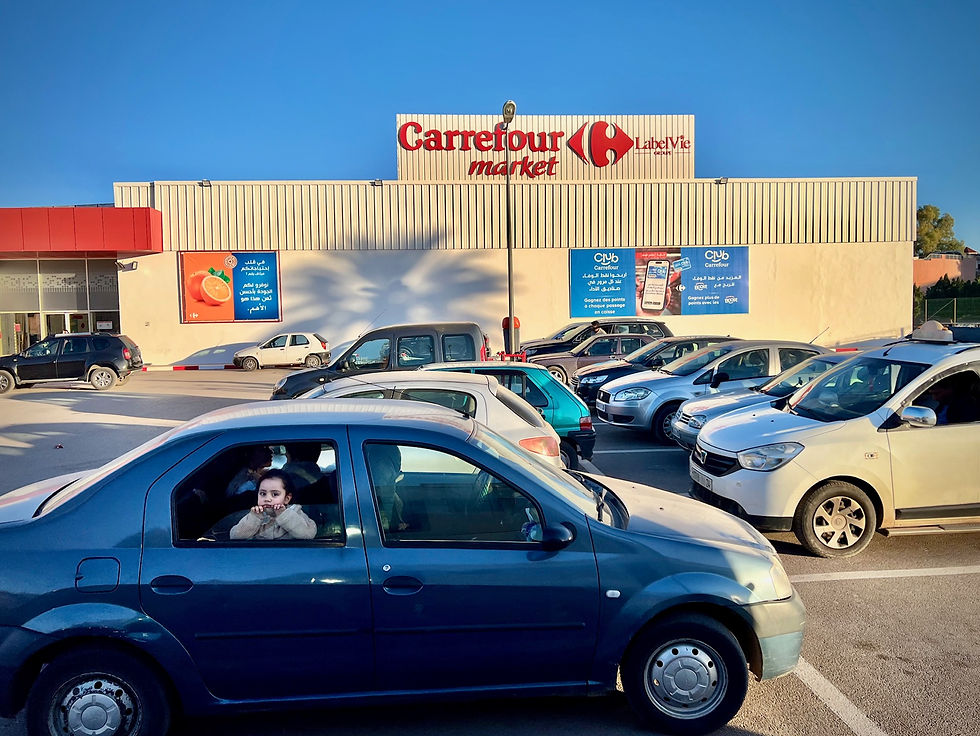
We do a shop in Carrefour; we’d like to replenish our wine stocks and rather charmingly the cave is to be found through an unmarked door round the side of the building, very clandestine; we’re surprised to see that it’s busy with Moroccan shoppers. Alcohol is relatively expensive in Morocco however they do have vineyards and the local wine we’ve tasted has been good and it’s cheap. We buy several bottles.
The car park is pretty noisy with passing traffic, so Janette sets off to find the gendarmerie. The police officers are charming and say we can park where we like but also make the offer of the use of some spaces in their compound, we decide to accept so Nick drives Lionel over.
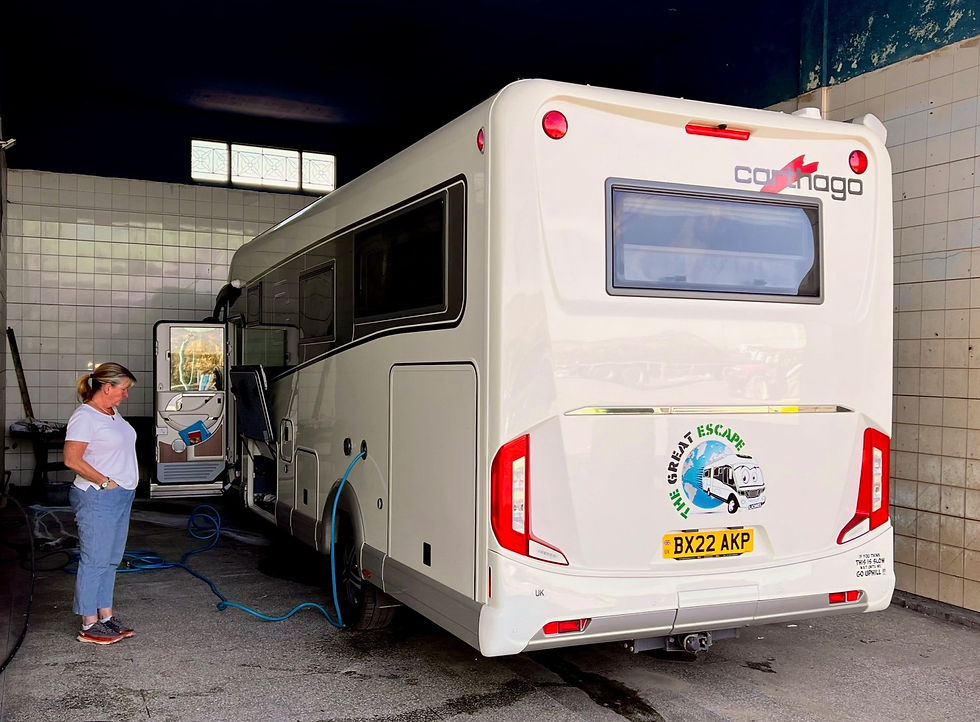
Today we are aiming for Meknes, another long drive. We are going to stay just outside the old city walls in guardian parking - this isn’t a campsite, it’s just a parking space which someone, the guardian, monitors 24 hours and for which you pay a tiny price, in the case of this spot it’s £1.57 for 24 hours!
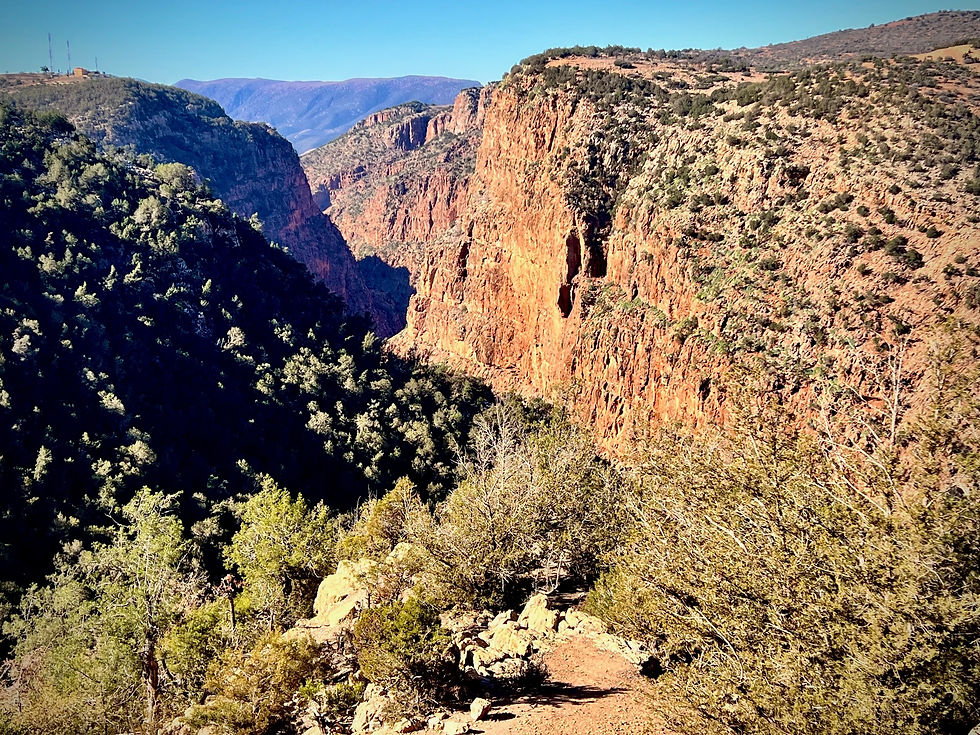
The drive today is much more interesting. The rock is a warm golden colour and as we snake downhill we see a deep gorge slicing through the mountainside, it’s really dramatic.

We have to drive over a small relatively flimsy-looking bridge but the sign says it will take 10 tons (Lionel and all our gear weighs about 4.8) so we go over holding our breath.


As we journey on, we notice that the palm trees have by and large disappeared to be replaced by rolling golden hills with olive and pine trees.
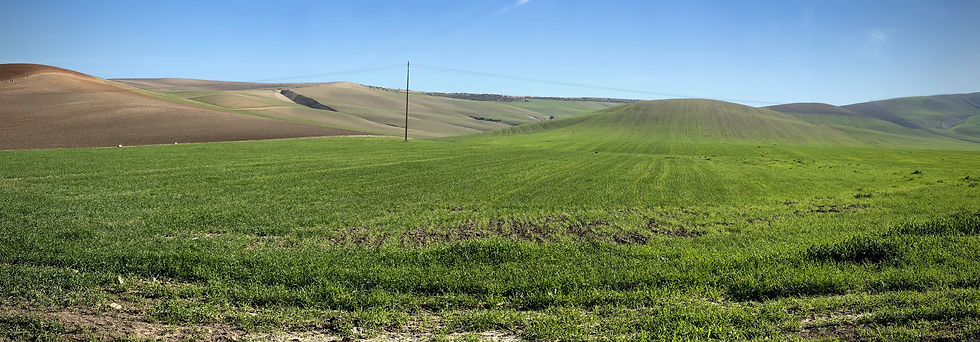
The scenery then becomes much more green and gentle and, something we haven’t seen till now, people are keeping cows instead of just sheep and goats. We also notice that the rivers start to have water in them which increases the further north we go.

We then pass a massive area which is given over to large-scale cattle farming. The land is fenced off on both sides of the road for as far as the eye can see and men are painting the fence posts white.
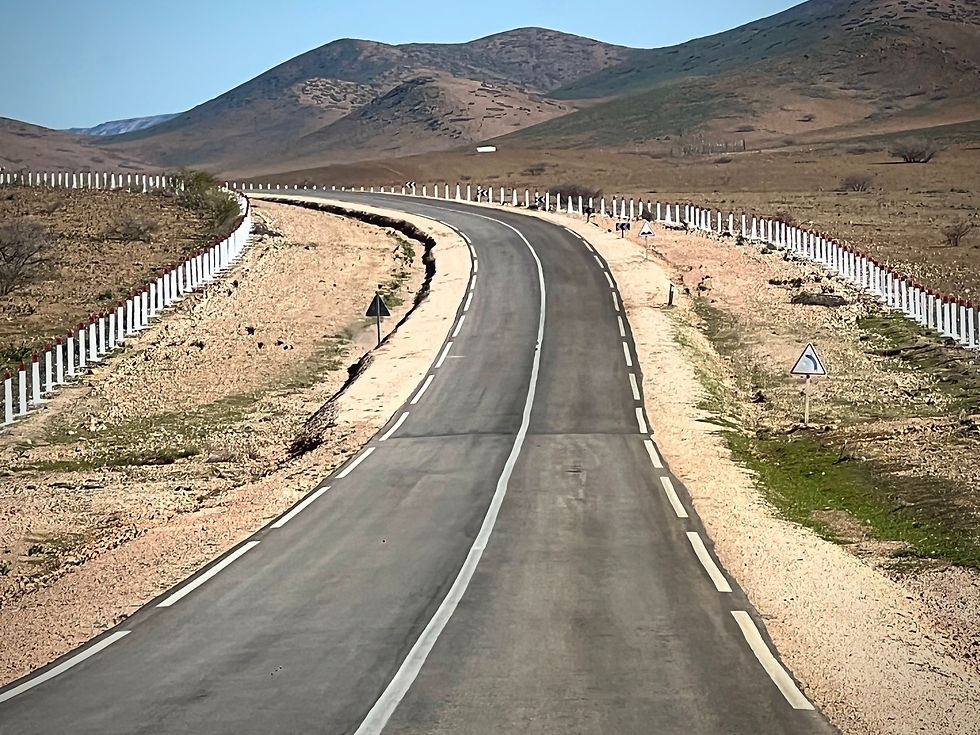
Precision doesn’t seem to be the name of the game for these painters, the paint is sloshed on the floor and all over the men as well as on the posts. Also, they have not painted the tops of the posts, why? A few miles on and the question is answered as another team is painting the pole tops red.
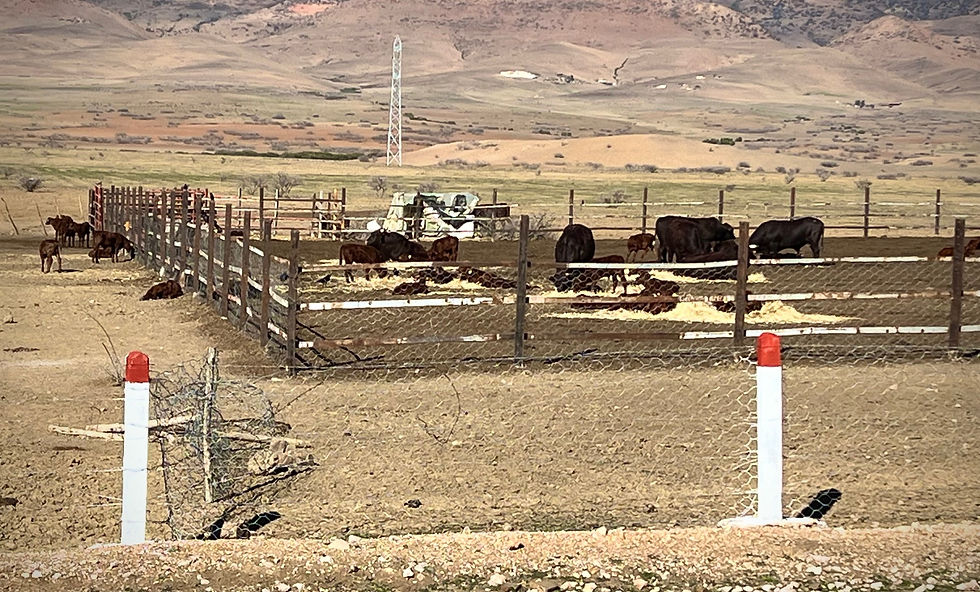
We see that in our absence down south, the crops have begun to sprout, turning what was brown and barren-looking land to a rich emerald.
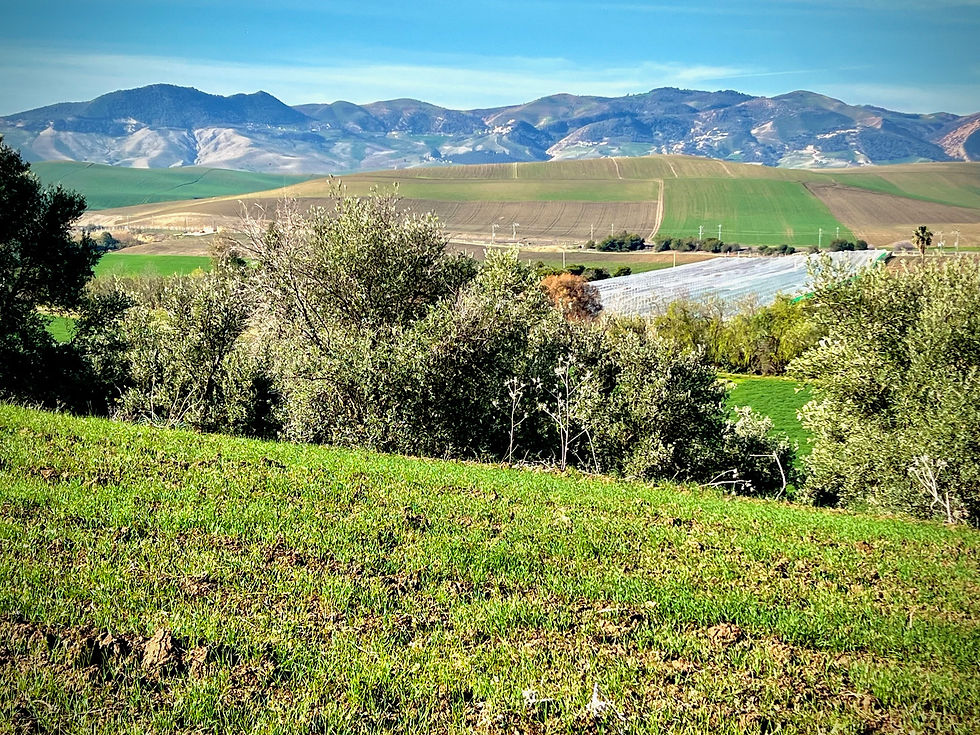
It’s a real rural idyll until we turn a bend in the road and come upon a massive quarry which has eaten away half the hillside.
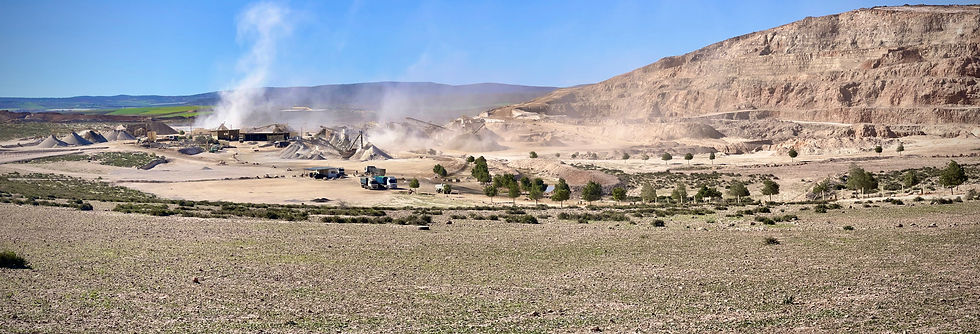
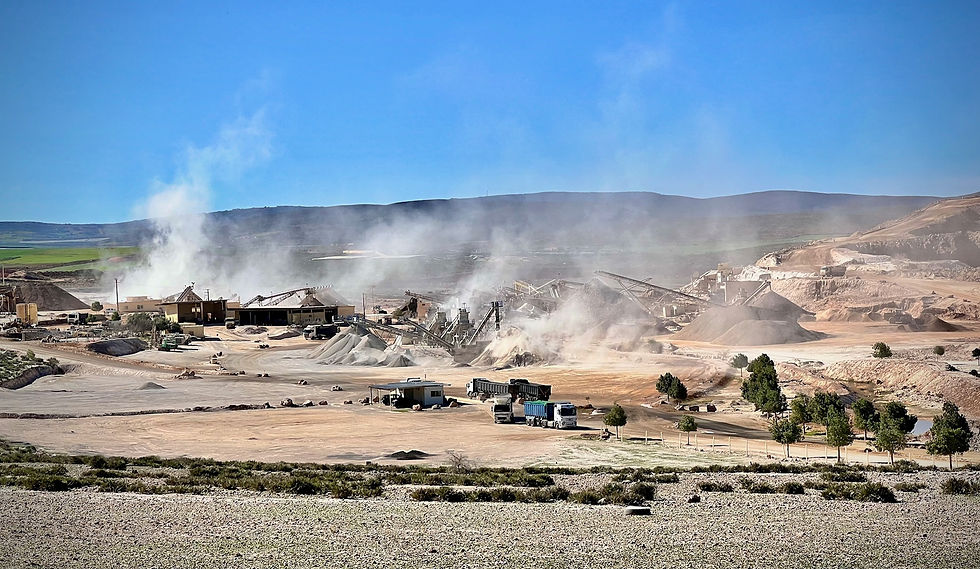
Heavy machinery trundles about creating huge dust clouds and the road becomes busy with lorries. The idyll is shattered.
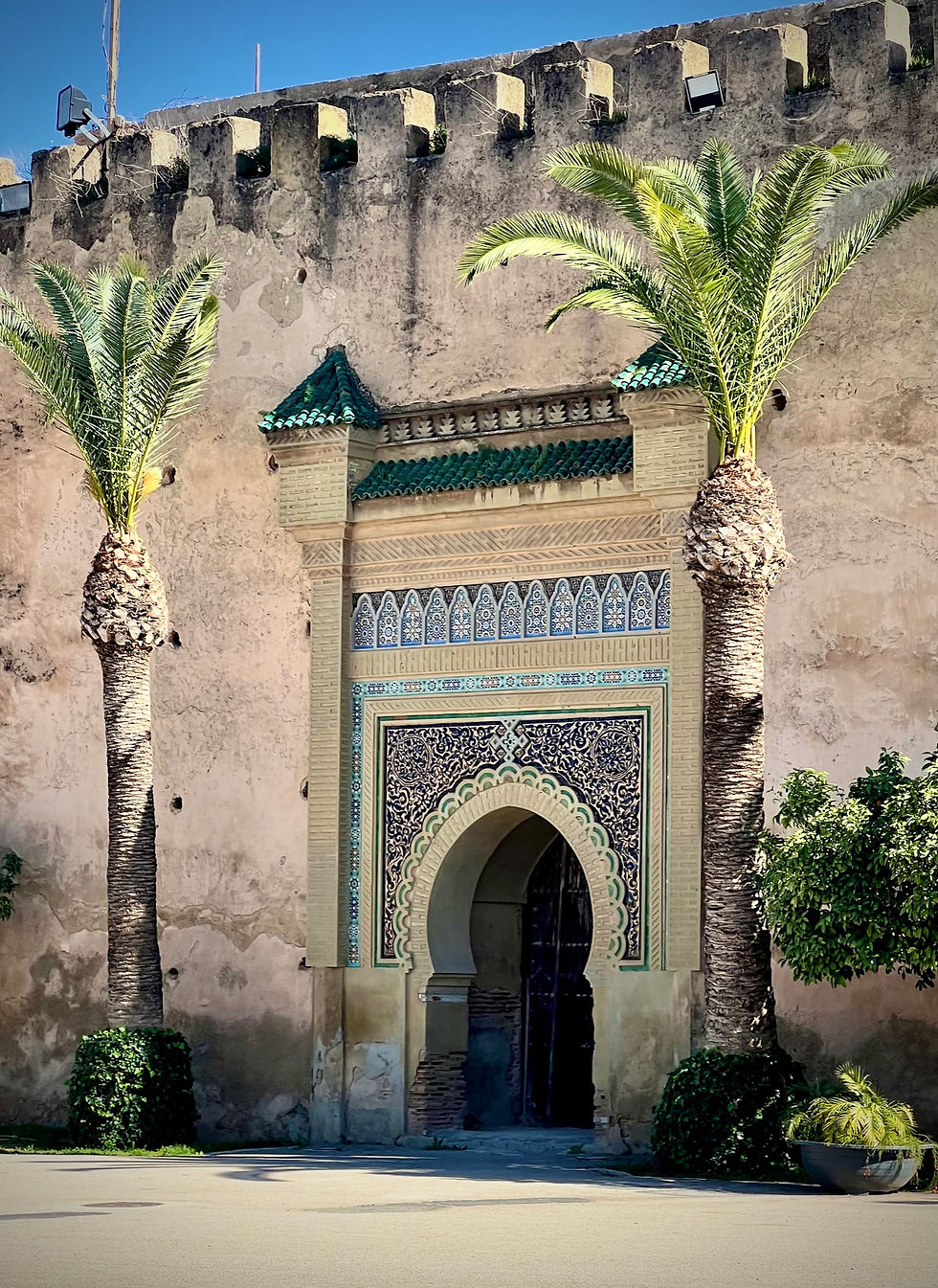
Meknes is one of Morocco’s imperial cities of which there are four - Fes, Marrakesh, Rabat, and Meknes - our research shows it to be lovely but it turns out to be a big disappointment. It’s clear that large sums are being invested in a restoration project but this means that the vast majority of sights are closed. All we can see are the huge exterior walls or, even worse, some buildings completely shrouded in protective awning.
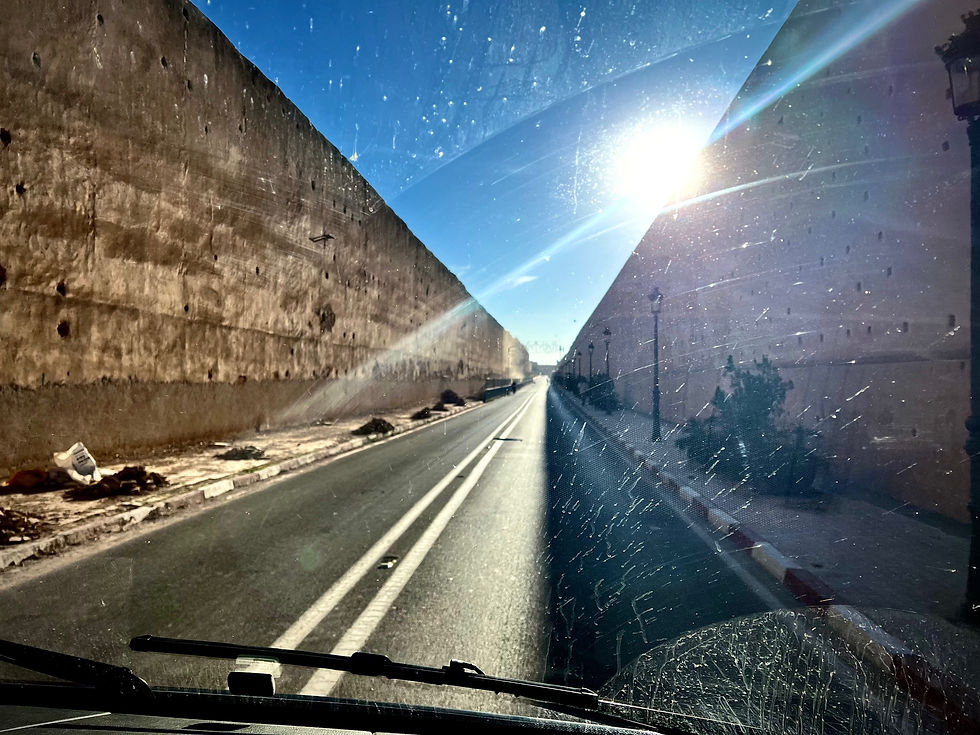
We visit the markets, which were heaving, but struggled to get to grips with this city and don’t really feel it’s got the atmosphere of many of the other places we’ve seen. Maybe once the renovations are finished it will be restored to its former glory but that looks as if it will be some time off yet.
We have discovered that Meknes is a major wine-producing area and maybe next time we’ll visit some vineyards and do some tastings - it seems rude not to!
From Meknes, yet another long drive, this is a grueling part of the journey, especially for Nick as the driver.
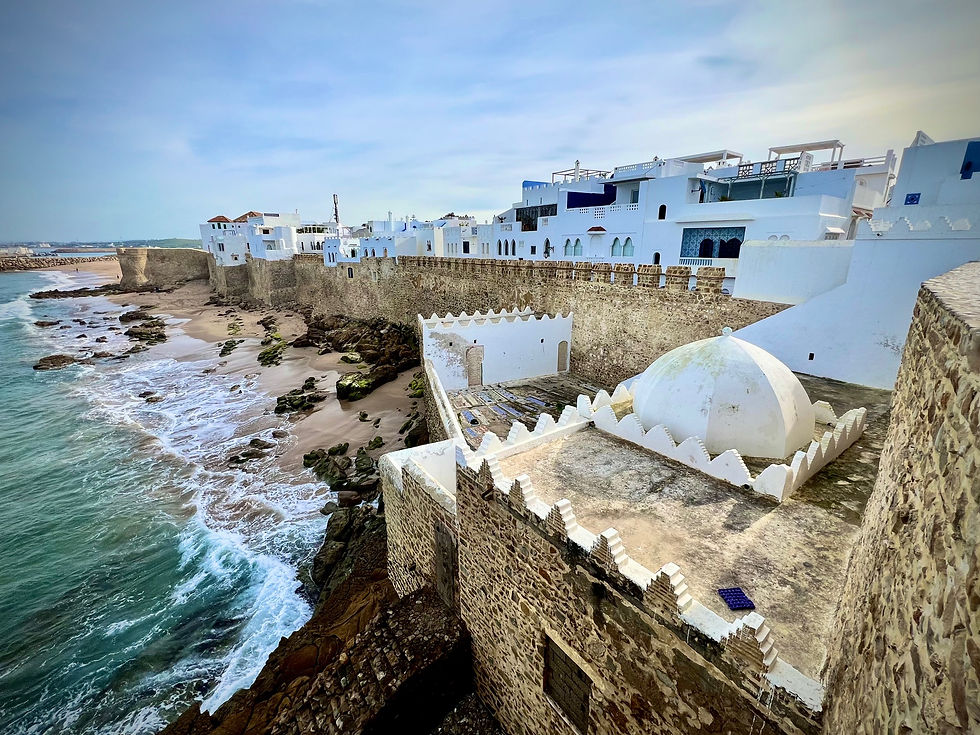
Our destination today, which will be our final stopover in Morocco, is Asilah. This town has a reputation for being beautiful and a centre for artists, we’re looking forward to it.
The beach is across the road from the campsite, so we take the dogs for a well-earned walk and stretch our legs. We'll explore the town tomorrow.
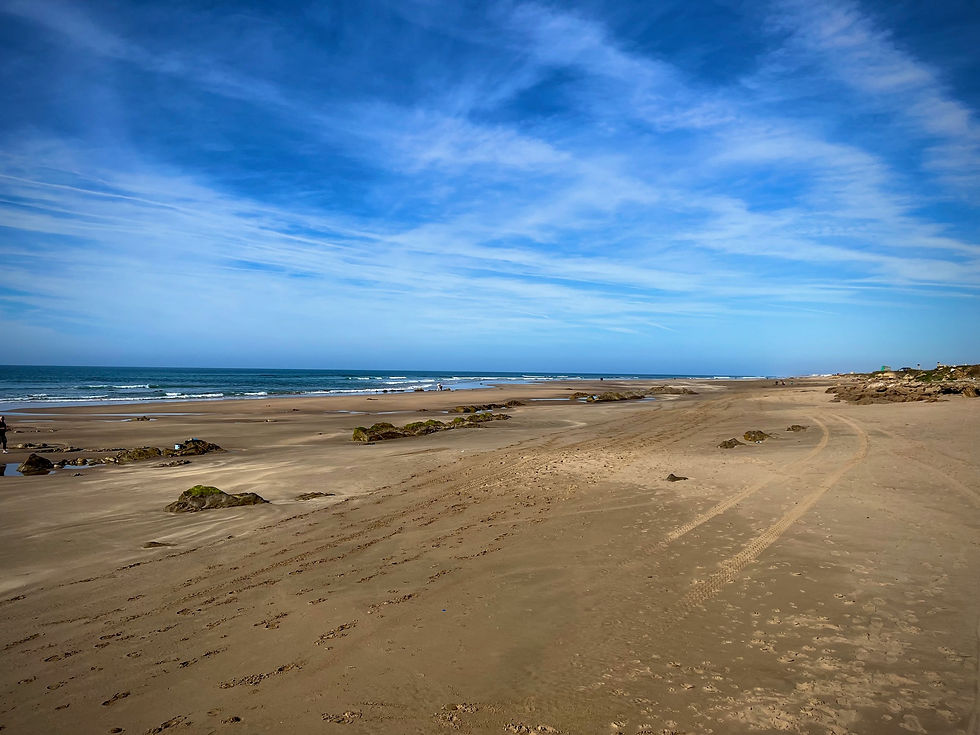
In the morning we have another quick walk on the beach and then head into the medina which is a joy. It is easily as beautiful as it would have you believe.
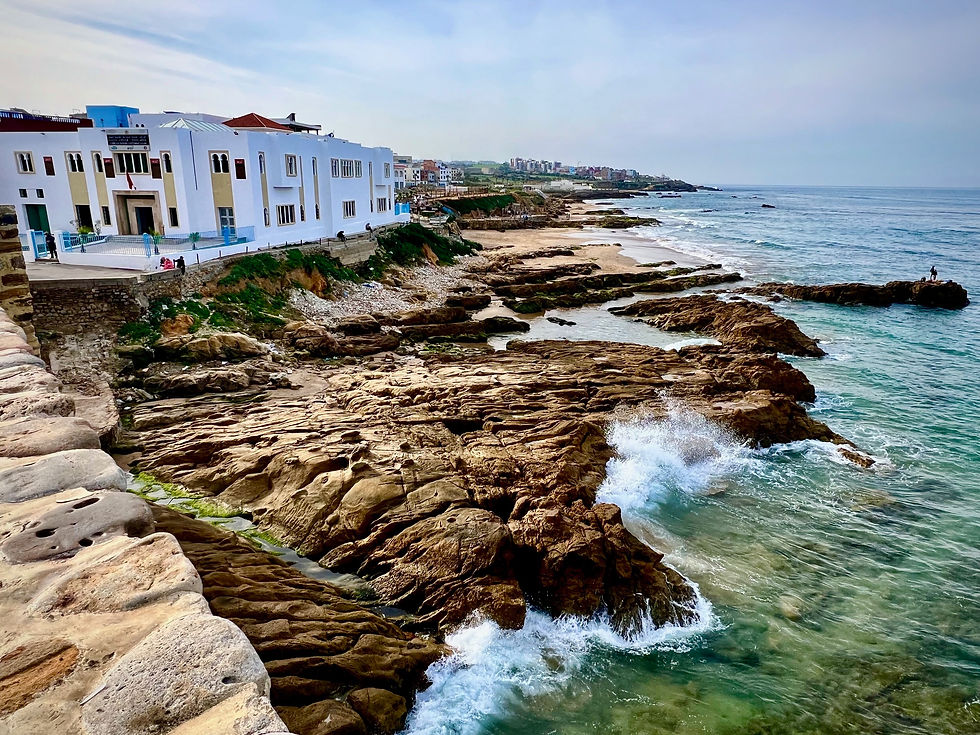
As we are there before things have really got going, it’s very peaceful and we have time and space to take lots of photos and enjoy some of the artwork; the only other people there at this time of day are a big party of Chinese people who strike the most extraordinary poses when having photos taken - we pick up some tips and follow suit!


We drift out of the medina and into town where there’s a local’s market in full swing. We head into the souk which is the most gritty we’ve been into. There are chickens wandering about, and many more in cages and all sorts of meat for sale at the butcher's stalls.
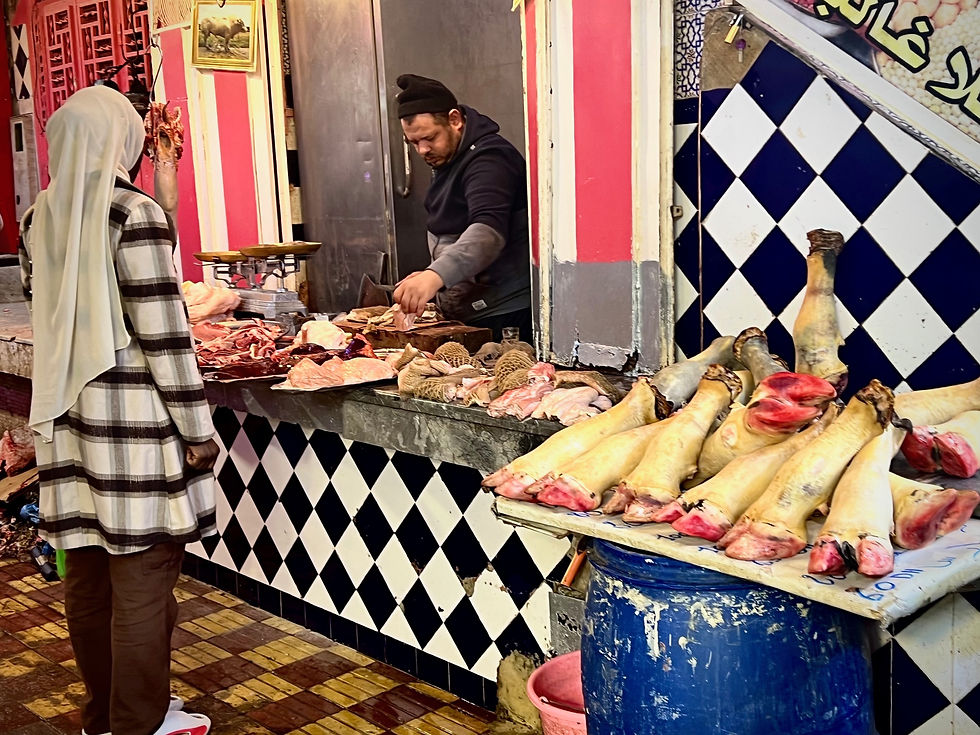

We drift about the medina a bit more and then go home for some downtime before heading out for a meal in the evening.

The Spanish influence on this town is very evident - many people speak Spanish, a lot of the restaurants serve European food as well as alcohol. There is also the Catholic Church of St. Bartholomew, one of only a handful of Catholic churches in this country, it's very typically Spanish in style.
We’d like a Moroccan meal but this is Monday night and many places are closed so we end up in Casa Garcia, a seafood restaurant which is very European. We do however have a lovely evening and it’s a nice way to say farewell, but not goodbye, to this vibrant, sometimes challenging but always wonderful country.
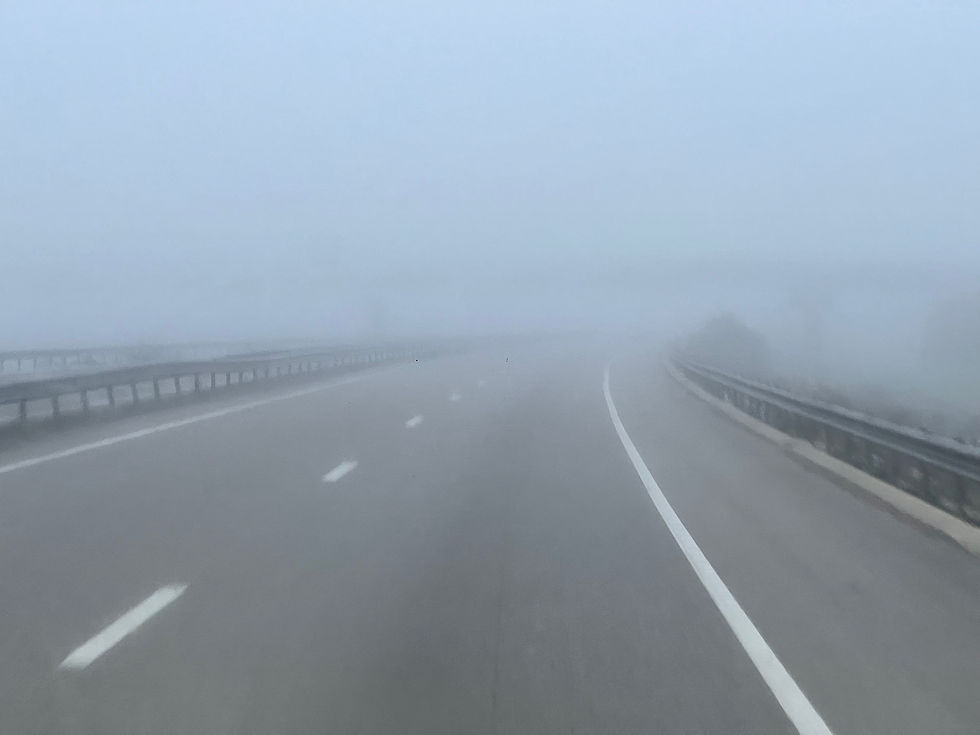
We get up early this morning as we want to catch the 11 a.m. ferry and we need to be at the port for 9. The weather has turned in the night and it’s dank and foggy as we whizz along the motorway. Suddenly the fog clears to reveal a flaming sunrise, a last treat from Morocco!

We arrive promptly at the port and show our tickets, only to be told that the 11 a.m. ferry has been cancelled and the next one isn't due to leave until 2.30 p.m. So much for early starts!
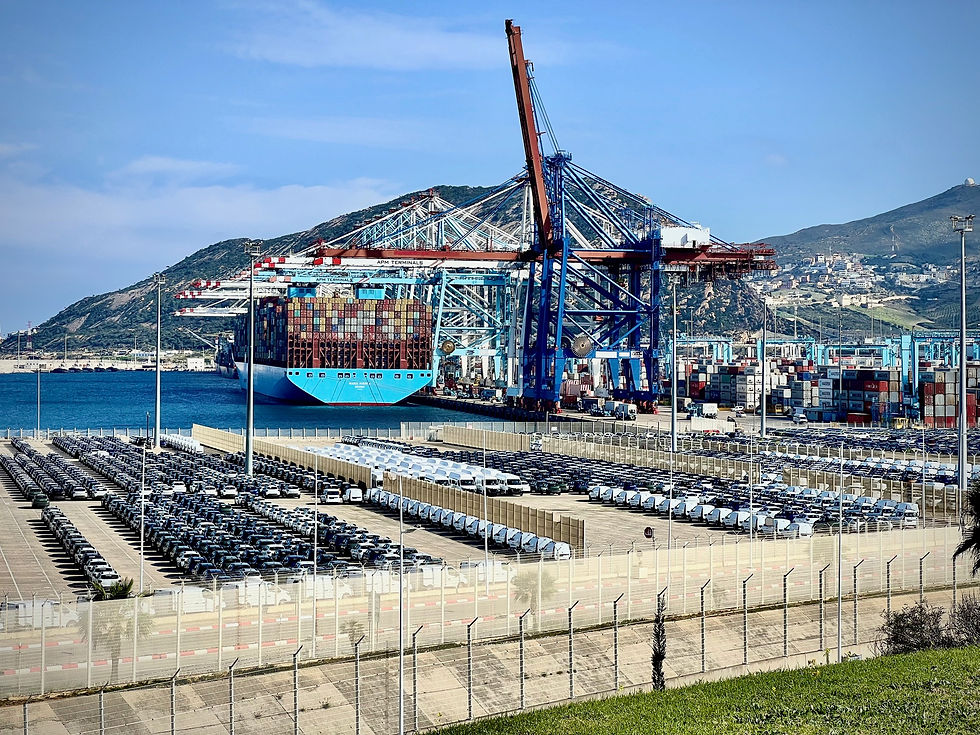
We are directed through passport control and customs at just gone midday, Lionel is x-rayed once more and although the officials see that we have dogs, no one asks to see their papers.
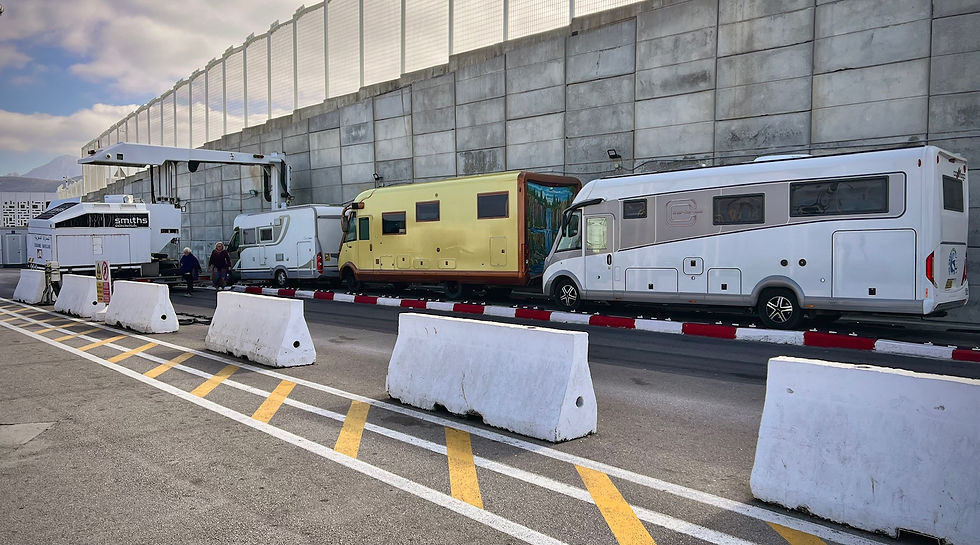
We wait in the queue for the ferry......and we wait......and wait, other ferries come and go but there is no sign of ours. Eventually, it arrives at about 2.20 and the waiting is over......or is it? Officials arrive and check the paperwork for every single disembarking person and vehicle before they are allowed to leave the ship, it takes literally hours. Finally, we are away at about 5.30 having been at the port for over 8 hours! We are tired and fed up and so sad to be leaving Morocco, we have loved it here and can't believe how quickly the time has gone.
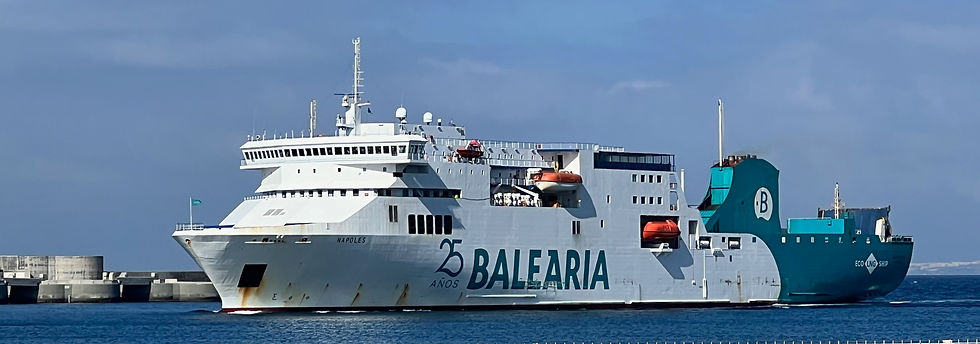
We hope you've enjoyed reading about our Moroccan adventures. Next week, as well as the weekly update as we travel back through Spain and Portugal, we'll post a review of our experiences travelling around Morocco, the pros (of which there are many) the cons (of which there are few), and the things we've learned...... see you next week!



















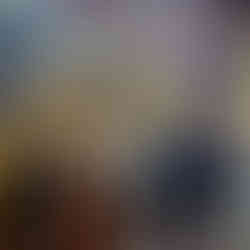

























Feel like we’ve all had a chance to experience Morocco with you - great blog 😁
Great blog - I’d have had kittens with that tiny ‘meant to be’ 10 tonne bridge!
Great blog Nick - enjoy the rest of your journey home…
Fabulous! A lovely coverage of Morocco!
Fantastic last views of Morocco, loved the cascades amazing! That bridge crossing looked a bit hairy 😱😱! Thank you for taking us on your journey it’s been lovely, the pictures have been amazing and you captured some beautiful views 🥰🥰, safe journey 🤗🤗